What Is An Ocean Dead Zone?
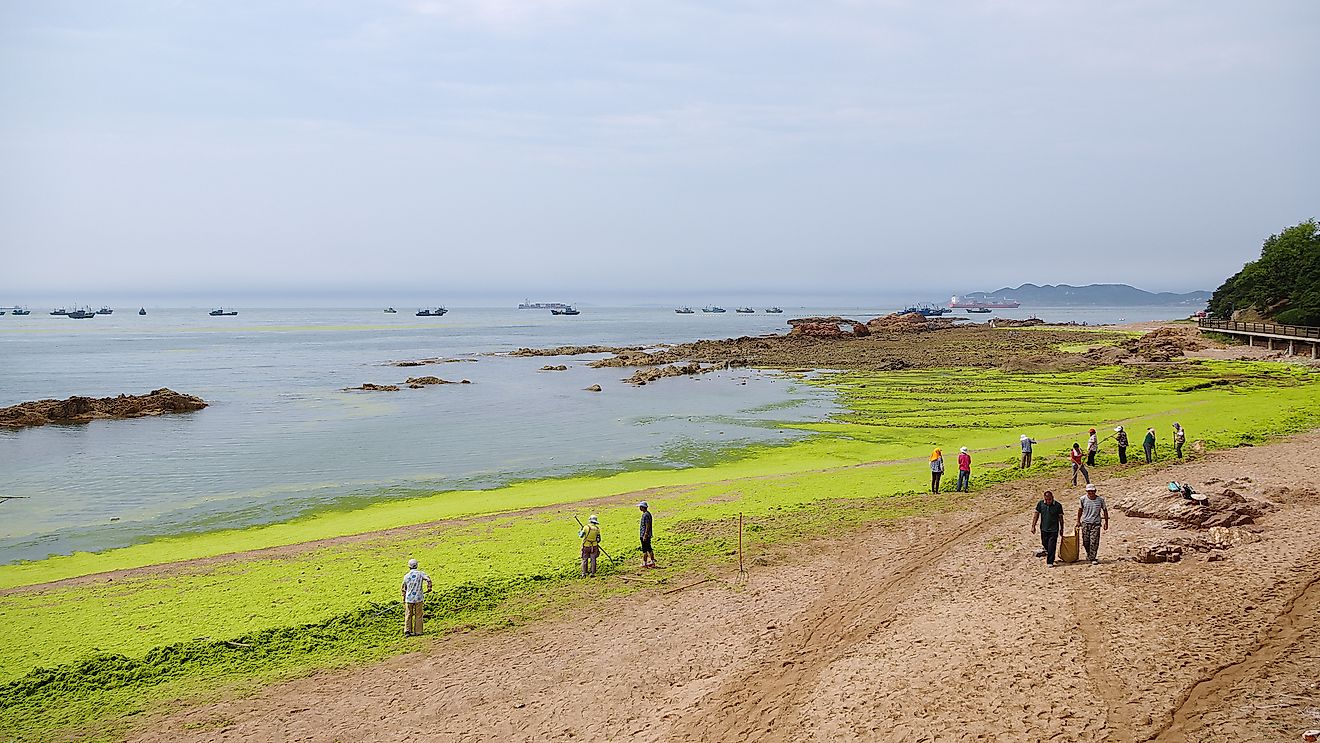
- An ocean dead zone is an area of extremely low oxygen, where organisms cannot survive
- This hypoxia, or lack of oxygen, is often caused by algae blooms or rapid seaweed growth
- The algae blooms occur due to an increase in phosphorous and nitrogen in the sea waters, usually cause by human pollution
Areas of low oxygen are known as hypoxic, and usually cannot sustain life, or if they can, have very limited life, as the majority of organisms on earth require significant amounts of oxygen in order to function.
Contents:
- What Is An Ocean Dead Zone?
- Causes
- Where Do Dead Zones Occur?
- Impact On The Environment
- Impact On Human Life
- The Death Of An Algal Bloom
What Is An Ocean Dead Zone?
An ocean dead zone is an area of low oxygen within the ocean. Such areas become hypoxic when there is an unnatural increase in nutrient in any given region. These nutrients are usually in the form of phosphorus and/or nitrogen. Plants use these nutrients to grow, but it is when they become so concentrated that oxygen is almost entirely depleted.
Blue-green algae is the primary source of this phenomenon. This natural cyanobacteria feeds off those nutrients, and can in some areas maintain a healthy balance with its environment. As mentioned, however, when nutrient levels are extra high, the algae grows at an extreme rate, and can overpower everything else in the area, causing these dead zones.
Causes
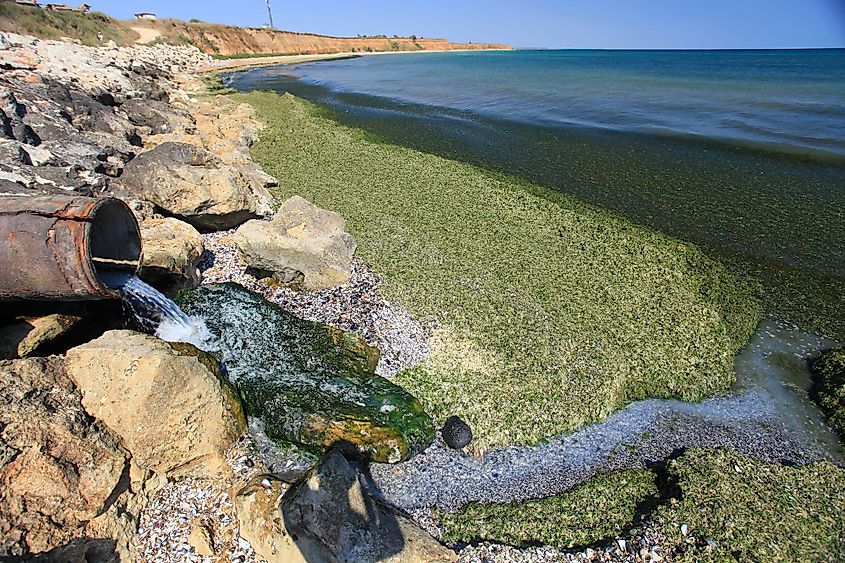
Unfortunately, the main reason for the increase in nutrients found in these low oxygen areas of the sea is human. The blue-green algae fields, and ocean dead zones, are therefore often found off the coast of highly populated areas, and regions where agriculture is prevalent. Agriculture and industry produce large amounts of nitrogen and phosphorus which leach into soil and air. Water runoff through soil that contains high levels of these nutrients wash them into the sea, while those that are expelled into the air, can fall to the surface, or sea level in the form of rain.
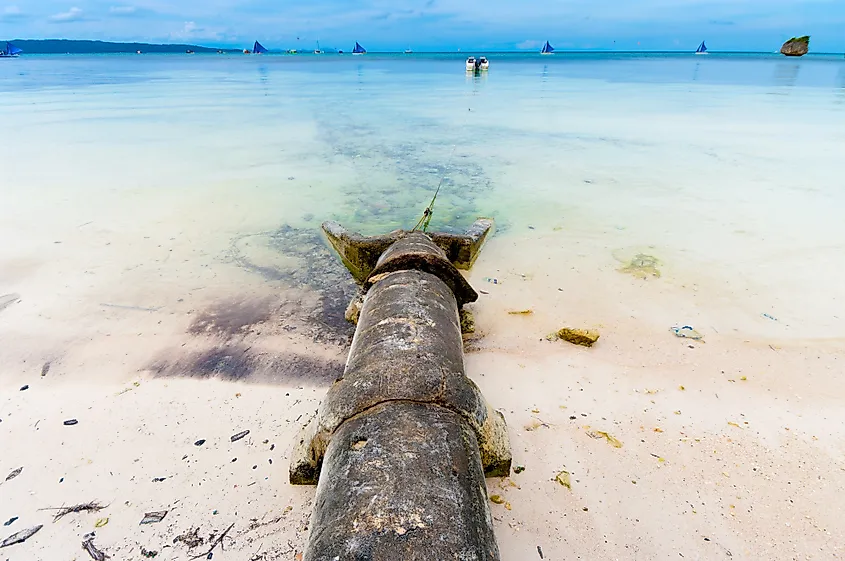
In this way, human activity has massively increased the abundance of these nutrients in the oceans, causing an imbalance in the seas. This, in turn, leads to the dead zones.
Where Do Dead Zones Occur?
There have been roughly 415 different dead zones identified around the world. The first known dead zone was in Chesapeake Bay, on the United States east coast. This zone was discovered in the 1970s, and was caused primarily by agriculture and rapid urbanization. Runoff from farms, as well as nitrogen air pollution brought about an extreme increase in previously unseen nutrients into the bay. This swiftly caused an ocean dead zone, which is still present today.
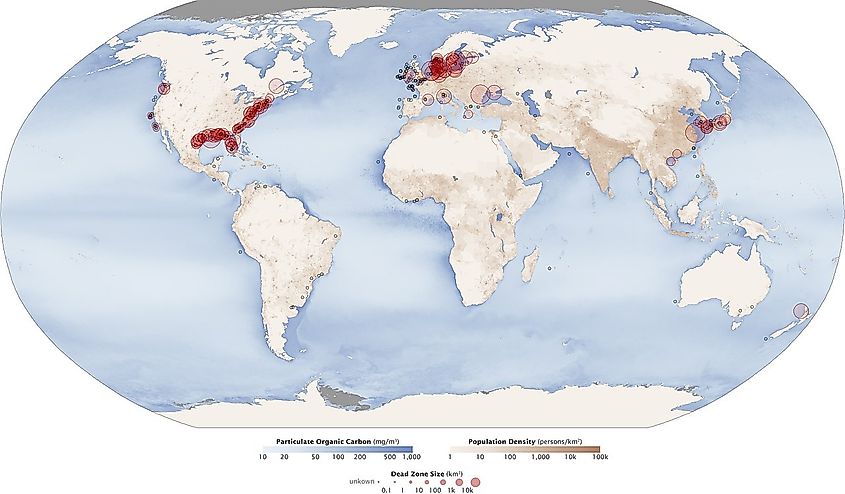
While systems were put in place in Chesapeake to help reduce the effects of human life on the oceans and bays, ocean dead zones are still increasing. SInce 1970, dead zones and polluted waters have been consistently on the rise.
Most ocean dead zones are found in highly populated or highly industrialized areas. The eastern coast of the United States of America has the highest percentage, followed by the Baltic States. Similarly, Japan and the Korean Peninsula also have high levels of oceanic dead zones.
Impact On The Environment
As mentioned, the increase in these nutrients within the seas, causes certain plants and algaes to grow. Phytoplankton, seaweeds and algae thrive in these nutrient rich environments. When these grow at a very rapid rate, it is known as an algae bloom. These blooms are often the reason for ocean dead zones.
The reason these blooms can be harmful, is that they grow so large and with such speed, that ecosystems become very unbalanced. The algae also grows on the surface of the water, meaning it blocks almost all light from penetrating the surface of the water in areas where the algae is most dense. This means that other marine plants which would need sunlight to grow, are blocked.
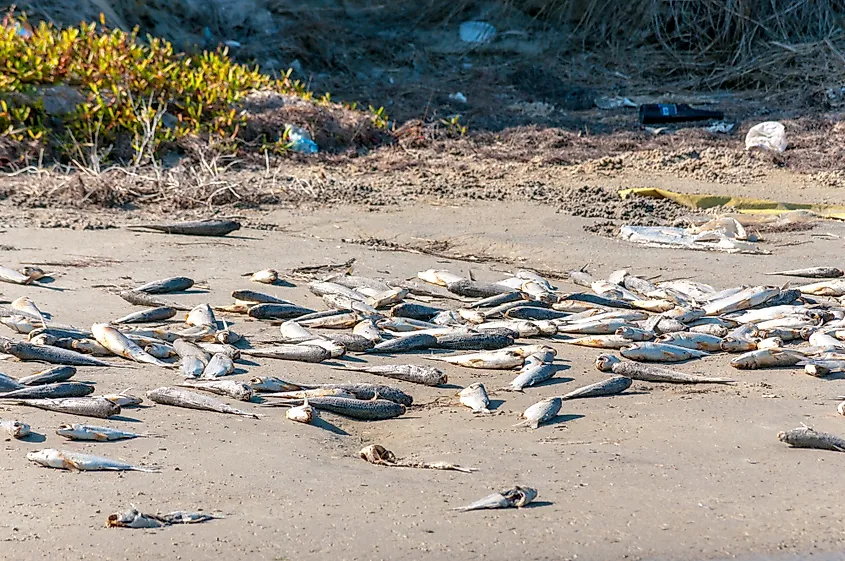
Similarly, these blooms stop organisms below them from being able to absorb oxygen, which is essential to almost all aquatic life. Without oxygen, marine life is unable to survive here, hence the name of the dead zone. Even if not all life is killed off in these areas, biodiversity is drastically reduced, as only a limited number of species can survive in these conditions.
If the amount or variety of fish decrease in an oceanic region due to an algae bloom, birds, seals and other mammals that feed on these food sources often go hungry, starve, or are forced to find food in other areas, further solidifying the ‘dead zone’.
Impact On Human Life
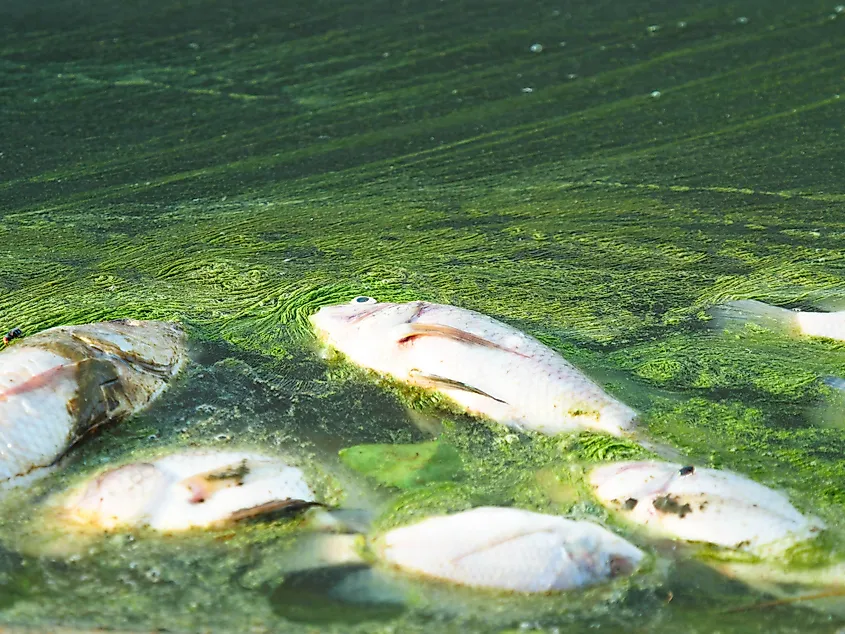
The algae blooms can also be directly harmful to humans. Many of the nutrients and microbes in and around these blooms are harmful or toxic to humans. Not only does that make these areas ones that must be avoided, but any shellfish from these regions can also be dangerous. This is because shellfish filter feed, meaning the water from these toxic regions filters through them. As such, toxins and harmful microbes can remain in the shellfish and cause illness to any human that eats them. This is also true of marine life and many fish - meaning algae blooms and dead zones can have a huge impact on the fishing industry, and a country’s economics in general.
The Death Of An Algal Bloom
Even the blooms cannot live in such harsh environments. Just as they spring up rapidly, algae blooms tend to quickly die off, as they use up all the oxygen in any given area, causing hypoxia. Once the oxygen levels are so depleted, the algae begins to die, and will then sink to the ocean floor. Still, the area will remain hypoxic as the large amounts of dead sea plants are decomposed by bacteria. This means that even once a bloom appears gone, a dead zone can remain for a very long time.











